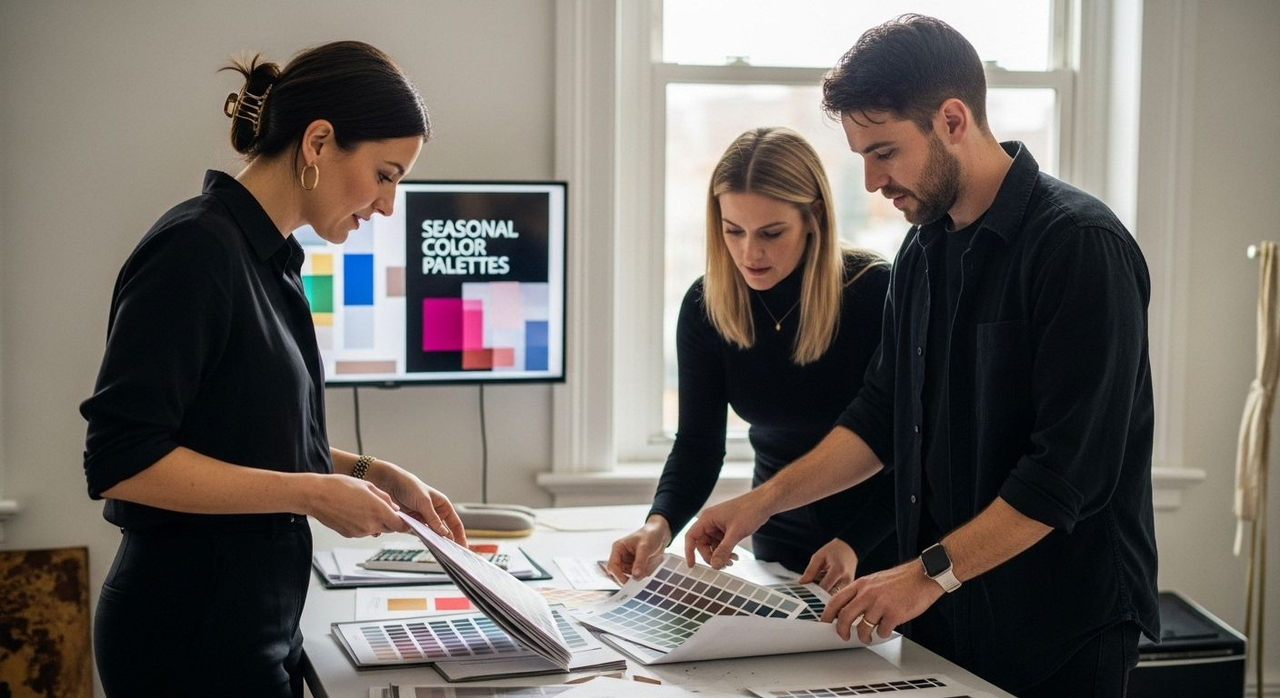Understanding Seasonal Color Palettes for Special Events
Understanding Seasonal Color Palettes for Special Events
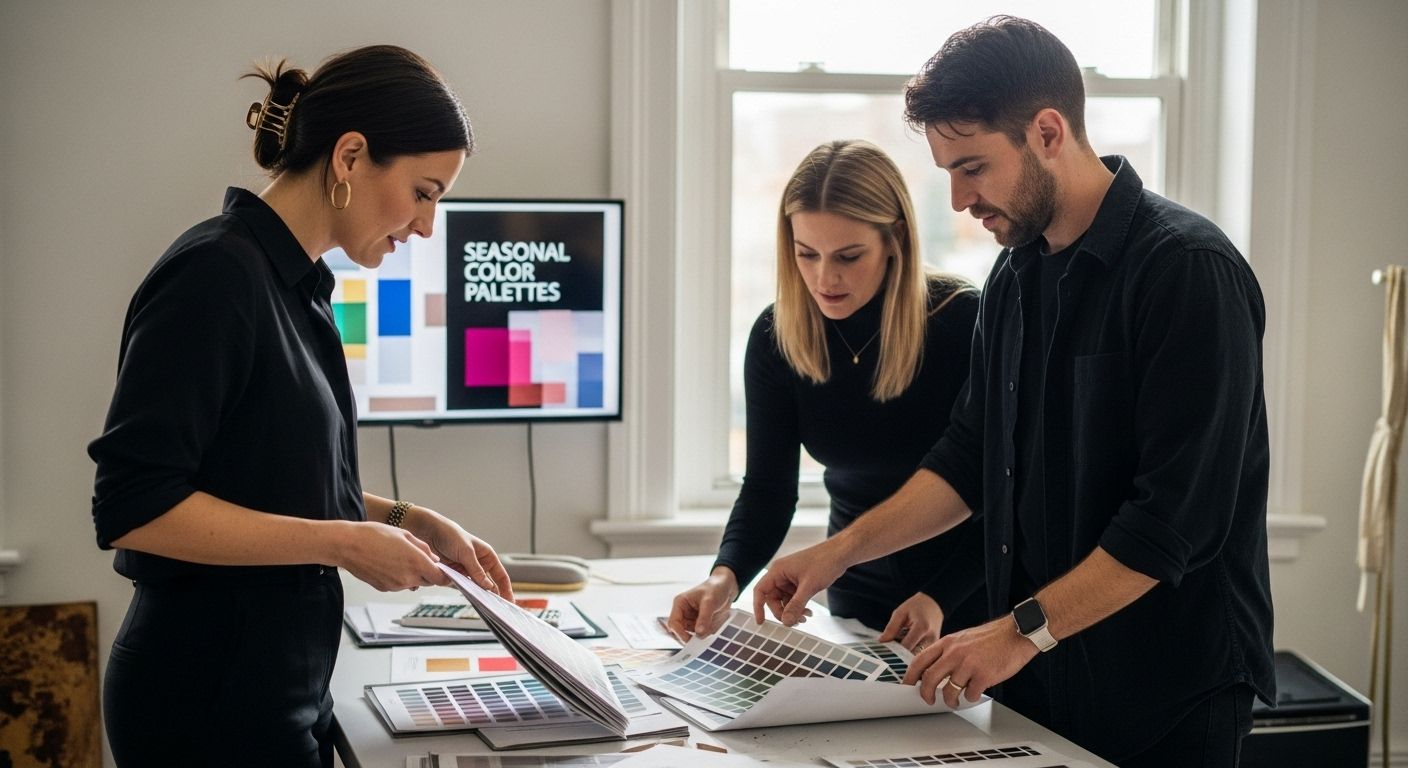
Seasonal color palettes have quietly shaped everything from our closets to event spaces, drawing inspiration directly from the changing natural world. But here is a surprise. Wearing colors that match your seasonal palette can actually brighten your complexion and minimize imperfections, shifting how others perceive you and how you feel in your own skin. Forget random color picks. This method uses your natural undertones and the psychology of color to turn simple choices into powerful visual statements.
Table of Contents
- What Are Seasonal Color Palettes?
- Why Seasonal Color Palettes Matter In Fashion?
- How Seasonal Color Palettes Influence Your Choices
- Key Concepts Behind Seasonal Color Palettes
- Real-World Applications Of Seasonal Color Palettes
Quick Summary
| Takeaway | Explanation |
|---|---|
| Understand seasonal color theories. | Seasonal color palettes are based on nature’s colors, helping guide wardrobe choices according to seasons. |
| Identify your personal color palette. | Knowing your seasonal palette enhances your look by matching clothing to your natural features and undertones. |
| Leverage color psychology in fashion. | Colors affect mood and perception, using the right seasonal palette can boost confidence and communicate style. |
| Apply palettes in design fields. | Seasonal color palettes are useful for event planning, graphic design, and personal branding, creating cohesive visual experiences. |
| Consider contextual factors in color choices. | Factors like personal undertones and cultural associations influence effective color selection, enhancing overall aesthetic appeal. |
What Are Seasonal Color Palettes?
Seasonal color palettes are sophisticated visual frameworks that strategically organize colors based on natural seasonal characteristics, helping individuals select clothing, accessories, and design elements that harmonize with specific time periods. These palettes draw inspiration from the unique color ranges observed in nature during spring, summer, autumn, and winter, translating environmental tones into wearable and design-oriented color schemes.
The following table compares the four main seasonal color palettes, summarizing their typical characteristics and the psychological impressions they convey.
| Seasonal Palette | Typical Color Qualities | Psychological Impression |
|---|---|---|
| Spring | Soft, bright, warm | Youthful, energetic, vibrant |
| Summer | Cool, muted, soft | Sophisticated, gentle, calm |
| Autumn | Warm, rich, earthy | Warm, grounded, inviting |
| Winter | Cool, bold, intense | Bold, dramatic, powerful |
Understanding Color Theory Foundations
At the core of seasonal color palettes lies a deep understanding of color theory and visual harmony. Colors are meticulously grouped by undertones, brightness, and saturation levels that correspond to specific seasonal qualities. For instance, spring palettes typically feature soft, bright, and warm colors like coral, mint green, and light yellow, reflecting the emerging vibrancy of the season. Design experts at the U.S. Web Design System emphasize that intentional color selection goes beyond aesthetic preference, creating visual experiences that communicate mood and style.
Practical Applications in Fashion and Design
Seasonal color palettes serve multiple purposes across various domains. In fashion, they help individuals identify colors that complement their natural skin tone, hair color, and personal features. These palettes guide wardrobe selections, ensuring cohesive and flattering outfit combinations. Designers and stylists use seasonal color analysis to:
- Create visually harmonious clothing collections
- Develop personalized styling recommendations
- Enhance individual confidence through color-matched attire
Beyond fashion, seasonal color palettes influence graphic design, interior decorating, and event planning, providing a systematic approach to color coordination that transcends individual industries. By understanding these palettes, individuals can make more informed aesthetic choices that reflect both personal style and seasonal sensibilities.
Why Seasonal Color Palettes Matter in Fashion?
Seasonal color palettes represent more than aesthetic preferences. They are powerful tools in fashion that enable individuals to make strategic wardrobe choices that enhance personal appearance, boost confidence, and communicate sophisticated style sensibilities. These systematic color frameworks provide a nuanced approach to understanding how specific color combinations can dramatically transform personal presentation.
Personal Color Optimization
Choosing colors that align with one’s natural coloring is fundamental to creating flattering and harmonious outfits. Seasonal color palettes help individuals identify shades that complement their unique skin undertones, hair color, and eye color. This approach goes beyond simple color matching, focusing on creating visual synergy between personal features and clothing selections. Wearing colors within your seasonal palette can visually brighten complexion, minimize perceived imperfections, and create a more polished overall appearance.
Psychological Impact of Color Selection
Color choices in fashion extend far beyond visual aesthetics, profoundly influencing psychological perception and personal confidence.
Research from the University of Manchester highlights how specific color selections can impact emotional states and social interactions. Different seasonal palettes communicate distinct personality traits and emotional energy:
- Spring colors convey youthful enthusiasm and vibrancy
- Summer palettes suggest softness and sophistication
- Autumn tones communicate warmth and groundedness
- Winter colors represent boldness and dramatic presence
By understanding these nuanced color communication strategies, individuals can intentionally craft visual narratives through their clothing choices, leveraging color psychology to enhance personal and professional interactions.
How Seasonal Color Palettes Influence Your Choices
Seasonal color palettes function as sophisticated psychological and visual navigation systems that guide personal style decisions, transforming color selection from arbitrary choices into intentional, strategic expressions of individual identity. These frameworks offer more than aesthetic recommendations, providing a comprehensive approach to understanding how color interacts with personal characteristics and environmental contexts.
Cognitive Color Processing
The human brain processes color through complex neurological pathways that connect visual perception with emotional and psychological responses. Color selection is not merely a visual experience but a deeply personal interaction between individual perception and environmental stimuli. Research in Cognitive Science reveals that our color preferences dynamically shift according to seasonal changes, reflecting deeper ecological and psychological mechanisms that influence aesthetic choices.
Contextual Color Decision Making
Seasonal color palettes provide structured guidance for making nuanced wardrobe and design selections by considering multiple interconnected factors. These include:
- Personal skin undertones and natural coloring
- Psychological associations with specific color ranges
- Cultural and environmental contextual cues
- Individual emotional responses to color combinations
By understanding these intricate relationships, individuals can craft more intentional and harmonious visual presentations that authentically reflect their personality while maintaining aesthetic sophistication. The palette acts as a personalized color navigation system, helping users make confident selections across various fashion and design contexts.
This table outlines key factors that influence color decision making when using seasonal color palettes, showing how each element contributes to intentional selections.
| Influencing Factor | Description |
|---|---|
| Skin Undertones and Natural Coloring | Determines which palette best complements features |
| Psychological Color Associations | Shapes emotional responses and color preferences |
| Cultural and Environmental Cues | Impacts suitability based on context or tradition |
| Individual Emotional Responses | Guides choices based on personal feelings toward colors |
Key Concepts Behind Seasonal Color Palettes
Seasonal color palettes represent a sophisticated intersection of art, psychology, and personal style, grounded in complex principles that transform color selection from random choices to strategic design decisions. These frameworks provide a systematic approach to understanding how color interacts with individual characteristics, environmental contexts, and emotional experiences.
Color Theory and Undertone Analysis
Undertone identification is the foundational principle of seasonal color analysis, determining how specific colors interact with an individual’s natural coloring.
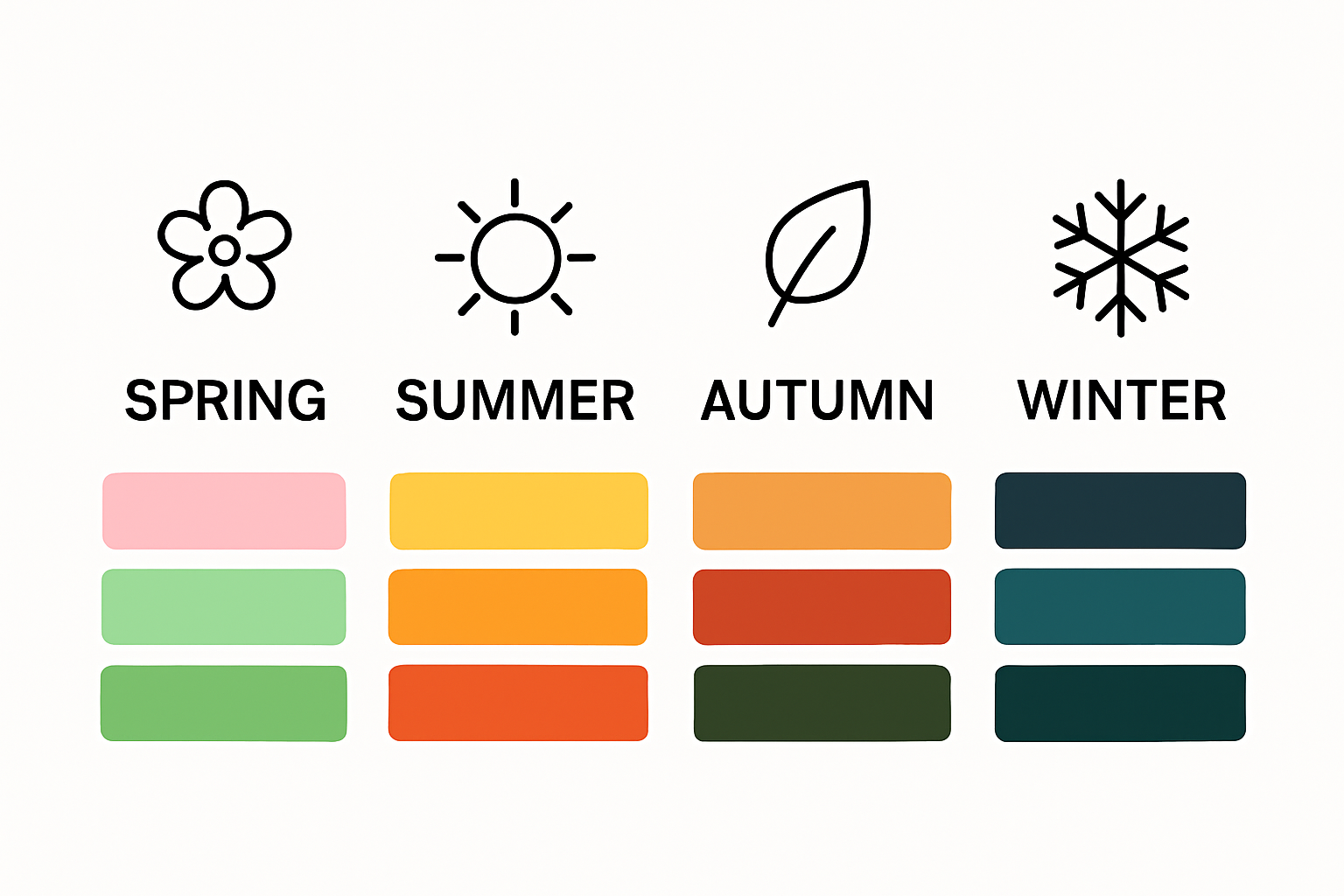 Color theorists classify undertones into warm, cool, and neutral categories, which directly correlate with seasonal palette classifications. These undertones are determined by examining the subtle hues beneath the skin’s surface, revealing whether an individual’s natural coloration leans towards golden (warm), bluish (cool), or balanced (neutral) spectrum.
Color theorists classify undertones into warm, cool, and neutral categories, which directly correlate with seasonal palette classifications. These undertones are determined by examining the subtle hues beneath the skin’s surface, revealing whether an individual’s natural coloration leans towards golden (warm), bluish (cool), or balanced (neutral) spectrum.
Psychological and Perceptual Dimensions
Color palettes extend beyond visual aesthetics, functioning as powerful communication tools that convey emotional and psychological signals. Design experts at the U.S. Web Design System emphasize that color selection involves understanding functional and emotional requirements. Different seasonal palettes communicate distinct psychological attributes:
- Spring palettes suggest youthfulness and energy
- Summer palettes indicate softness and sophistication
- Autumn palettes represent warmth and groundedness
- Winter palettes communicate boldness and dramatic intensity
By comprehending these nuanced color interactions, individuals can strategically craft visual narratives that authentically represent their personal style and emotional landscape.
Real-World Applications of Seasonal Color Palettes
Seasonal color palettes transcend theoretical concepts, serving as practical tools across multiple professional and personal domains. These sophisticated color frameworks enable strategic decision making in fashion, design, event planning, and personal branding, transforming abstract color theory into tangible visual strategies that communicate intention and aesthetic sophistication.
Event and Design Coordination
Event design represents a premier arena for implementing seasonal color palettes, where color selections create immersive atmospheric experiences**. Professionals leverage these palettes to craft cohesive visual narratives that evoke specific emotional responses and cultural associations**. Wedding planners, corporate event coordinators, and interior designers utilize seasonal color principles to develop harmonious environments that reflect specific themes, moods, and cultural contexts.
Professional and Personal Styling
In professional environments, seasonal color palettes provide nuanced guidance for wardrobe and presentation strategies. Personal stylists and image consultants employ these frameworks to help clients develop signature looks that enhance personal brand perception. Design research from Duke Farms demonstrates how strategic color matching can transform visual communication, allowing individuals to make intentional aesthetic choices that align with professional goals and personal identity.
Cultural and Emotional Resonance
Seasonal color palettes operate as sophisticated communication tools that extend beyond visual aesthetics. Different color combinations communicate complex cultural and emotional narratives:
- Holiday design traditions using specific color schemes
- Cultural celebrations featuring symbolic color representations
- Emotional storytelling through strategic color selection
- Brand identity development through consistent color usage
By understanding these intricate color relationships, individuals and professionals can craft compelling visual experiences that resonate deeply with intended audiences, transcending mere aesthetic preferences to create meaningful visual dialogues.
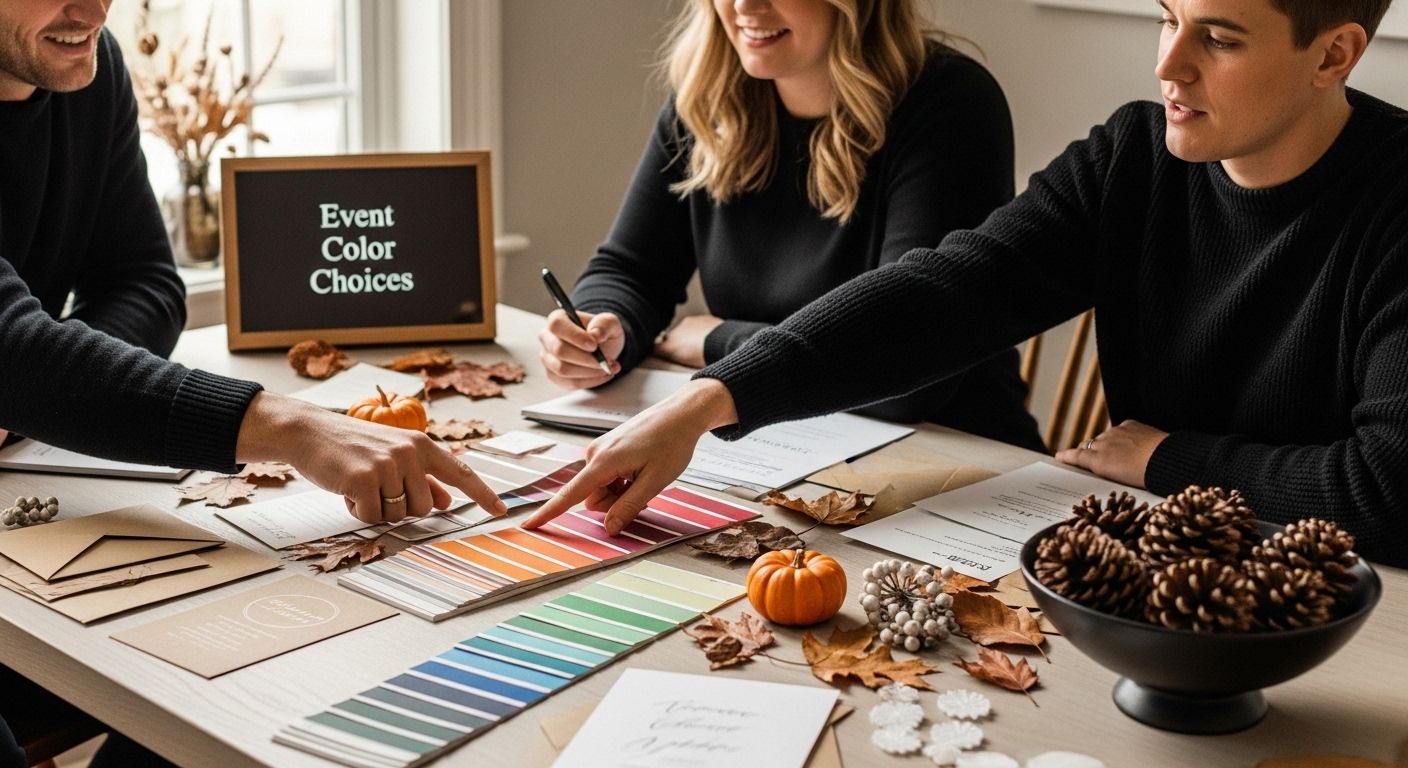
Discover Your Perfect Palette with Dress Me Up NY
Tired of the struggle to find a dress that makes you look and feel your best for a special event? The article highlights how seasonal color palettes bring together color theory, visual harmony, and personal style for unforgettable occasions. Whether you want to complement your skin tone or create a truly stunning entrance, the right choice of color can boost your confidence and elevate your presence. Dress Me Up NY understands that matching your dress to your unique seasonal palette can feel overwhelming without guidance.
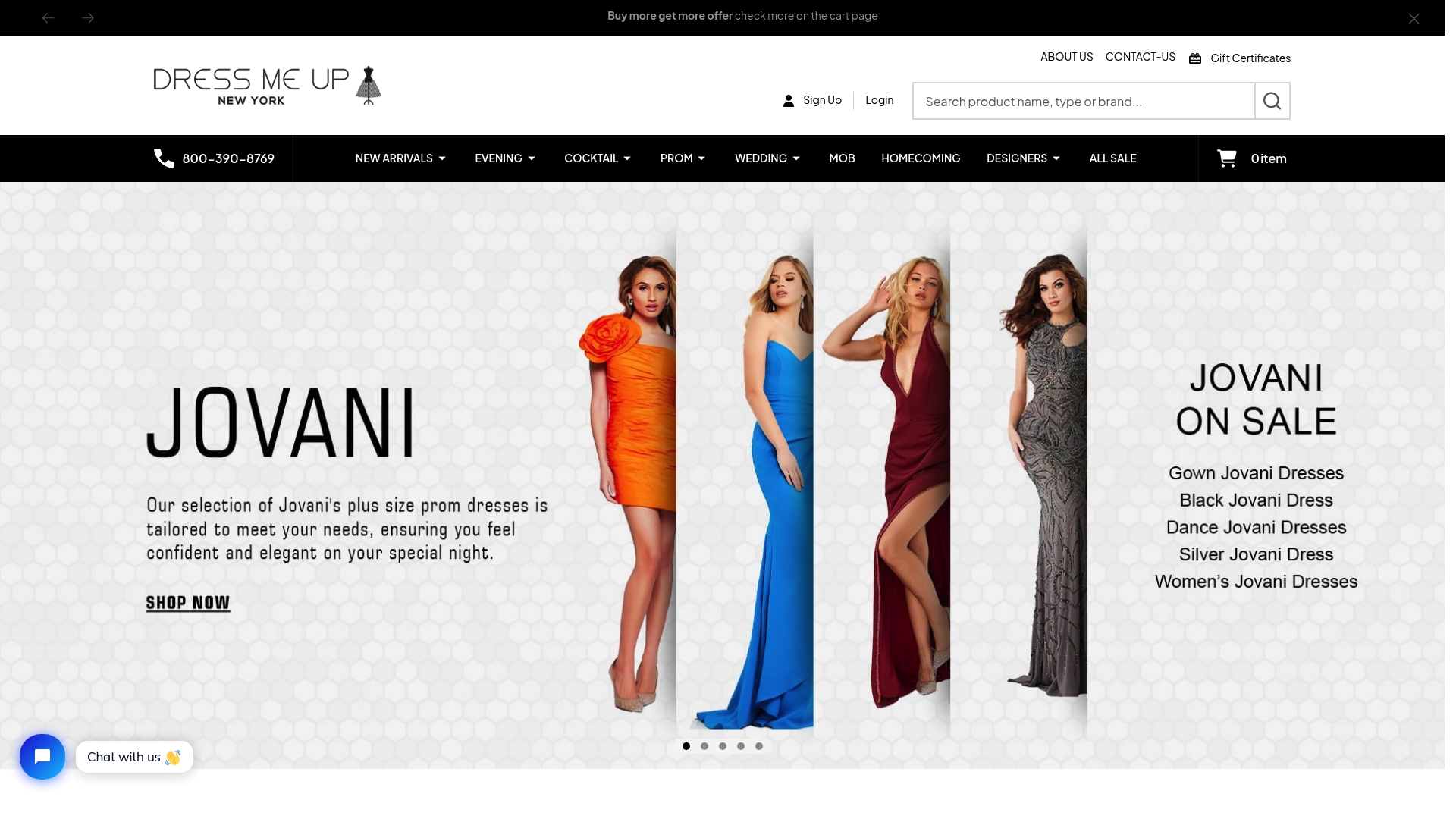
Bring the color concepts from the article to life by exploring the curated collections at Dress Me Up NY. Shop a wide range of women’s formal and special occasion dresses, each designed to fit different palettes and styles. Need a dress that fits your spring-inspired vibrancy or winter sophistication? Now is the moment to act. Visit Dress Me Up NY to find your perfect color match and stand out at your next event. Start browsing today for exclusive offers and a shopping experience inspired by the power of seasonal color palettes.
Frequently Asked Questions
What are seasonal color palettes?
Seasonal color palettes are frameworks that organize colors based on the characteristics of each season, helping individuals select colors that harmonize with their natural features and the environment.
How do seasonal color palettes enhance event design?
Seasonal color palettes create cohesive visual narratives in event design by selecting colors that reflect specific themes, evoke emotional responses, and establish a desired atmosphere for the event.
What factors should be considered when choosing a seasonal color palette for an event?
When choosing a seasonal color palette for an event, consider factors such as the event’s theme, the target audience, cultural associations of colors, and the emotional responses you want to evoke.
How can understanding color psychology improve personal styling?
Understanding color psychology can enhance personal styling by helping individuals select colors that reflect their personality traits and emotional energy, ultimately boosting personal confidence and creating more impactful visual presentations.
Recommended
- Tarik Ediz 54199 Taffeta Plunging Neck Sleeveless Long Dress
- Terani Couture 1811GL6436 Deep V-neck Long-sleeve Dress
- Clarisse 810413 Plunging V-neck Sequin Stretchy Prom Dress
- Terani Couture 251P4500 Tulle Off-Shoulder Straps Ballgown

